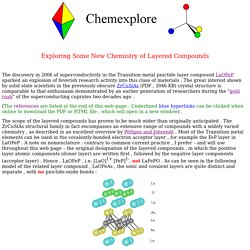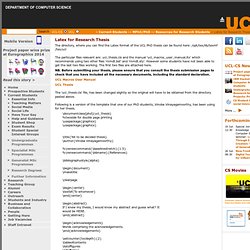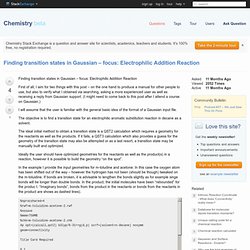

Exploring Some New Chemistry of Layered Compounds. Exploring Some New Chemistry of Layered Compounds The discovery in 2006 of superconductivity in the Transition metal pnictide layer compound LaOFeP sparked an explosion of feverish research activity into this class of materials .

The great interest shown by solid state scientists in the previously obscure ZrCuSiAs (PDF , 2046 KB) crystal structure is comparable to that enthusiasm demonstrated by an earlier generation of researchers during the "gold rush" of the superconducting cuprates two decades ago . (Thereferences are listed at the end of this web page . Underlined blue hyperlinks can be clicked when online to download the PDF or HTML file , which will open in a new window) .
The scope of the layered compounds has proven to be much wider than originally anticipated . Blue spheres : nickel ; brown spheres , arsenic Transition Metal Dichalcogenides as the Acceptor Layer Titanium disulfide is an interesting metallic solid . Note that this delta XO will be nodeless along the x axis . Python [BPSN Course] [Bloomsbury Postgraduate Skills Network (BPSN) Course] Tutor: Dell ZhangDate/Time: Fri 14 Mar 2014 and Fri 21 Mar 2014, 2pm - 5pmRoom: MAL 404, Birkbeck Main Building [BBK Maps] Description.
![Python [BPSN Course]](http://cdn.pearltrees.com/s/pic/th/python-bpsn-course-90177348)
Latex for Research Thesis. The directory, where you can find the Latex format of the UCL PhD thesis can be found here: /opt/tex/lib/texmf/tex/ucl The particular files relevant are: ucl_thesis.cls and the manual 'ucl_macros_user_manual.ltx' which recommends using two other files 'rnmdt.bst' and 'rnmdt.sty'.

However some students have not been able to get the last two files working. The first two files are attached here. NB. Before submitting your thesis, please ensure that you consult the thesis submission pages to check that you have included all the necessary documents, including the standard declaration. UCL Macros User Manual UCL Thesis The 'ucl_thesis.cls' file, has been changed slightly so the original will have to be obtained from the directory pasted above. Following is a version of the template that one of our PhD students, Vinoba Vinayagamoorthy, has been using for her thesis. \documentclass[phd]{ucl_thesis}%twoside for double page printing\usepackage{graphics}\usepackage{graphicx} \bibliographystyle{alpha} LaTeX. This is a guide to the LaTeX markup language.

It is intended to form a useful resource for everybody from new users who wish to learn, to old hands who need a quick reference. TeX and LaTeX TeX is a computer program for typesetting documents, created by Donald Knuth. It takes a suitably prepared computer file and converts it to a form which may be printed on many kinds of printers, including dot-matrix printers, laser printers and high-resolution typesetting machines. LaTeX is a set of macros for TeX that aims at reducing the user's task to the sole role of writing the content, LaTeX taking care of all the formatting process.
The book is organized in different parts. Getting Started will provide you with the very first steps to print your first document: general concepts (very important!) Contents[edit] If you have questions related to LaTeX, ask at the Q&A. MRS Online Proceedings Library - Abstract - Release Behaviour of Sr-90 From Hydraulically Retrieved ILW Sludge. Articles Release Behaviour of Sr-90 From Hydraulically Retrieved ILW Sludge J J Hastingsa1 a1 Nexia Solutions Ltd, Sellafield, Seascale, Cumbria, CA20 1PG, UK Abstract.

Computational chemistry - Finding transition states in Gaussian – focus: Electrophilic Addition Reaction - Chemistry Stack Exchange. There are various ways to go about determining a reaction pathway using electronic structure theory.

This post is to serve as a brief guide, highlighting a few useful techniques that may make this process more efficient. I will restrict this guide to a simple reaction mentioned below. Preliminaries Suppose you have a reaction of interest such as A + B -> C. In terms of relative energies we could define the electronic energies of an isolated A and an isolated B (i.e. Technique #1 - Finding a TS Using the QST2 & QST3 Methods The QST2 and QST3 methods allow the user to specify two minimum energy structures lying on each 'side' of a TS, and have an algorithm determine a TS which connects the two.
The difference between QST2 and QST3 is simply that the latter allows the user to input a TS guess. QST2 only requires two fully characterized minimum energy structures. Technique #2 - Finding a TS via Scanning Take your guess TS from the scan and insert it into a TS optimization job. Www.cosmologic.de/data/Turbomole_Tutorial_59.pdf. Principles and Applications of Density Functional Theory in Inorganic Chemistry I. The interaction of brucite surfaces with uranium and its fission products – Prof Nik Kaltsoyannis.